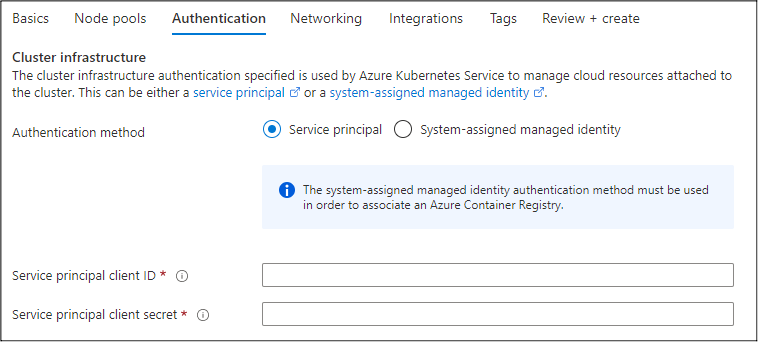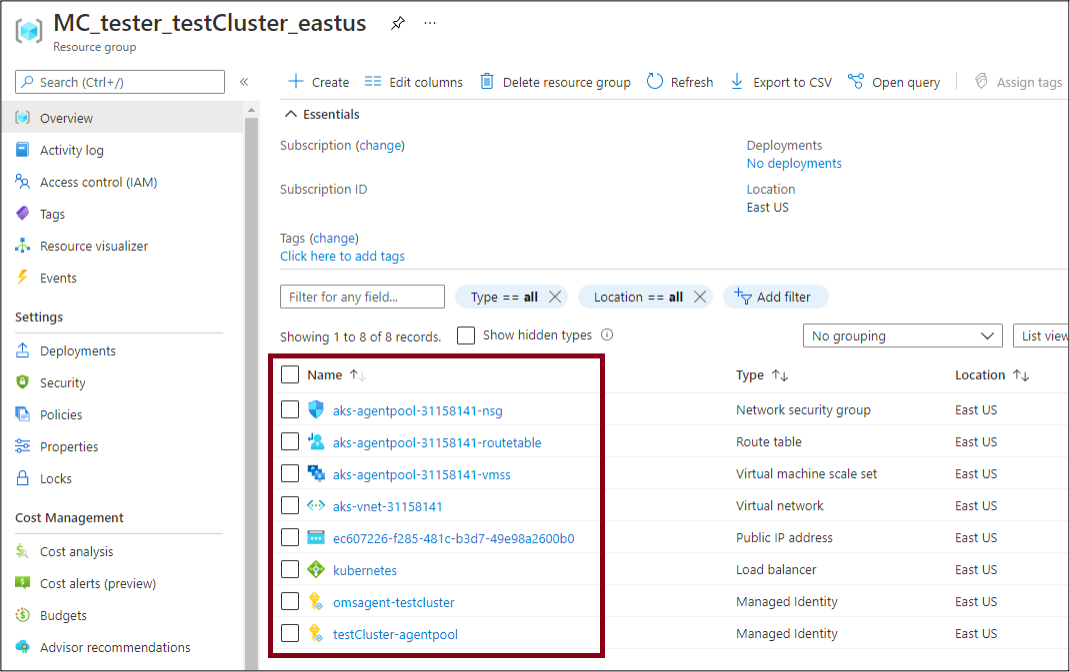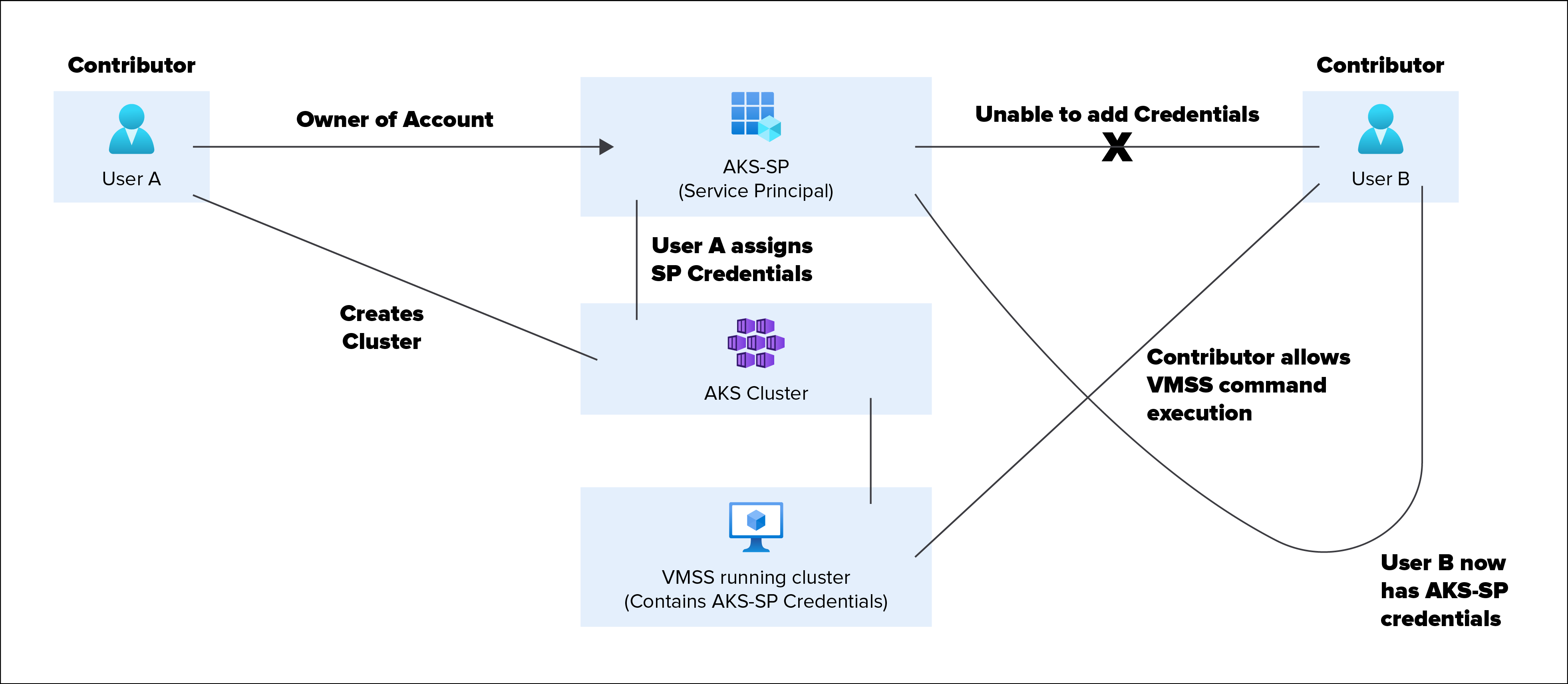
How To Extract Credentials from Azure Kubernetes Service (AKS)
As more applications move to a container-based model, we are running into more instances of Azure Kubernetes Services (AKS) being used in Azure subscriptions. The service itself can be complicated and have a large attack surface area. In this post we will focus on how to extract credentials from the AKS service in Azure, using the Contributor role permissions on an AKS cluster.
While we won’t explain how Kubernetes works, we will use some common terms throughout this post. It may be helpful to have this Kubernetes glossary open in another tab for reference. Additionally, we will not cover how to collect the Kubernetes “Secrets” from the service or how to review pods/containers for sensitive information. We’ll save those topics for a future post.
What is Azure Kubernetes Service (AKS)?
In the simplest terms, the AKS service is an Azure resource that allows you to run a Kubernetes cluster in Azure. When created, the AKS cluster resource consists of sub-resources (in a special resource group) that support running the cluster. These sub-resources, and attached cluster, allow you to orchestrate containers and set up Kubernetes workloads. As a part of the orchestration process, the cluster needs to be assigned an identity (a Service Principal or a Managed Identity) in the Azure tenant.
Service Principal versus Managed Identity
When provisioning an AKS cluster, you will have to choose between authenticating with a Service Principal or a System-assigned Managed Identity. By default, the Service Principal that is assigned to the cluster will get the ACRPull role assigned at the subscription scope level. While it’s not a guarantee, by using an existing Service Principal, the attached identity may also have additional roles already assigned in the Azure tenant.
In contrast, a newly created System-assigned Managed Identity on an AKS cluster will not have any assigned roles in a subscription. To further complicate things, the “System-assigned” Managed Identity is actually a “User-assigned” Managed Identity that’s created in the new Resource Group for the Virtual Machine Scale Set (VMSS) cluster resources. There’s no “Identity” menu in the AKS portal blade, so it’s my understanding that the User-assigned Managed Identity is what gets used in the cluster. Each of these authentication methods have their benefits, and we will have different approaches to attacking each one.

In order to access the credentials (Service Principal or Managed Identity) associated with the cluster, we will need to execute commands on the cluster. This can be done by using an authenticated kubectl session (which we will explore in the Gathering kubectl Credentials section), or by executing commands directly on the VMSS instances that support the cluster.
When a new cluster is created in AKS, a new resource group is created in the subscription to house the supporting resources. This new resource group is named after the resource group that the AKS resource was created under, and the name of the cluster.
For example, a cluster named “testCluster” that was deployed in the East US region and in the “tester” resource group would have a new resource group that was created named “MC_tester_testCluster_eastus”.
This resource group will contain the VMSS, some supporting resources, and the Managed Identities used by the cluster.

Gathering Service Principal Credentials
First, we will cover clusters that are configured with a Service Principal credential. As part of the configuration process, Azure places the Service Principal credentials in cleartext into the “/etc/kubernetes/azure.json” file on the cluster. According to the Microsoft documentation, this is by design, and is done to allow the cluster to use the Service Principal credentials. There are legitimate uses of these credentials, but it always feels wrong finding them available in cleartext.
In order to get access to the azure.json file, we will need to run a command on the cluster to “cat” out the file from the VMSS instance and return the command output.
The VMSS command execution can be done via the following options:
- Az PowerShell – Invoke-AzVmssVMRunCommand
- Az CLI – az vmss run-command
- Azure REST APIs – Microsoft Documentation Page
The Az PowerShell method is what is used in Get-AzPasswords, but you could manually use any of the above methods.
In Get-AzPasswords, this command execution is done by using a local command file (.tempscript) that is passed into the Invoke-AzVmssVMRunCommand function. The command output is then parsed with some PowerShell and exported to the output table for the Get-AzPasswords function.
Learn more about how to use Get-AzPasswords in my blog, Get-AzPasswords: Encrypting Automation Password Data.
Privilege Escalation Potential
There is a small issue here: Contributors on the subscription can gain access to a Service Principal credential that they are not the owner of. If the Service Principal has additional permissions, it could allow the contributor to escalate privileges.
In this example:
- User A creates a Service Principal (AKS-SP), generates a password for it, and retains the “Owner” role on the Service Principal in Azure AD
- User A creates the AKS cluster (Test cluster) and assigns it the Service Principal credentials
- User B runs commands to extract credentials from the VMSS instance that runs the AKS cluster
- User B now has cleartext credentials for a Service Principal (AKS-SP) that they do not have Owner rights on
This is illustrated in the diagram below.

For all of the above, assume that both User A and B have the Contributor role on the subscription, and no additional roles assigned on the Azure AD tenant. Additionally, this attack could extend to the VM Contributor role and other roles that can run commands on VMSS instances (Microsoft.Compute/virtualMachineScaleSets/virtualMachines/runCommand/action).
Gathering Managed Identity Credentials
If the AKS cluster is configured with a Managed Identity, we will have to use the metadata service to get a token. We have previously covered this general process in the following blogs:
- Gathering Bearer Tokens from Azure Services
- Lateral Movement in Azure App Services
- Azure Privilege Escalation Using Managed Identities
In this case, we will be using the VMSS command execution functionality to make a request to “https://169.254.169.254/metadata/identity/oauth2/token?api-version=2018-02-01&resource=https://management.azure.com/”. This will return a JWT that is scoped to the management.azure.com domain.
For the AKS functionality in Get-AzPasswords, we currently have the token scoped to management.azure.com. If you would like to generate tokens for other scopes (i.e., Key Vaults), you can either modify the function in the PowerShell code or run the VMSS commands separately. Right now, this is a pending issue on the MicroBurst GitHub, so it is on the radar for future updates.
At this point we can use the token to gather information about the environment by using the Get-AzDomainInfoREST function from MicroBurst, written by Josh Magri at NetSPI. Keep in mind that the Managed Identity may not have any real roles applied, so your mileage may vary with the token usage. Given the Key Vault integrations with AKS, you may also have luck using Get-AzKeyVaultKeysREST or Get-AzKeyVaultSecretsREST from the MicroBurst tools, but you will need to request a Key Vault scoped token.
Gathering kubectl Credentials
As a final addition to the AKS section of Get-AzPasswords, we have added the functionality to generate kubeconfig files for authenticating with the kubectl tool. These config files allow for ongoing administrator access to the AKS environment, so they’re great for persistence.
Generating the config files can be complicated. The Az PowerShell module does not natively support this action, but the Az CLI and REST APIs do. Since we want to keep all the actions in Get-AzPasswords compatible with the Az PowerShell cmdlets, we ended up using a token (generated with Get-AzAccessToken) and making calls out to the REST APIs to generate the configuration. This prevents us from needing the Az CLI as an additional dependency.
Once the config files are created, you can replace your existing kubeconfig file on your testing system and you should have access to the AKS cluster. Ultimately, this will be dependent on the AKS cluster being available from your network location.
Conclusion
As a final note on these Get-AzPasswords additions, we have run all the privilege escalation scenarios past MSRC for review. They have confirmed that these issues (Cleartext Credentials, Non-Owner Credential Access, and Role/Service Boundary Crossing) are all expected behaviors of the AKS service in a subscription.
For the defenders reading this, Microsoft Security Center should have alerts for Get-AzPasswords activity, but you can specifically monitor for these indicators of compromise (IoCs) in your Azure subscription logs:
- VMSS Command Execution
- Issuing of Metadata tokens for Managed Identities
- Generation of kubeconfig files
For those that want to try this on their own AKS cluster, the Get-AzPasswords function is available as part of the MicroBurst toolkit.
Need help securing your Azure cloud environment? Learn more about NetSPI’s Azure Penetration Testing services.
Explore more blog posts

Navigating Cybersecurity Regulations Across Financial Services
Learn about five areas businesses should consider to help navigate cybersecurity regulations, such as the Digital Operations Resiliency Act (DORA).

A New Era of Proactive Security Begins: The Evolution of NetSPI
Introducing The NetSPI Platform, the proactive security solution used to discover, prioritize, and remediate the most important security vulnerabilities. Plus, get a first look at NetSPI’s updated brand!

Penetration Testing: What is it?
Learn about 15 types of penetration testing, how pentesting is done, and how to choose a penetration testing company.